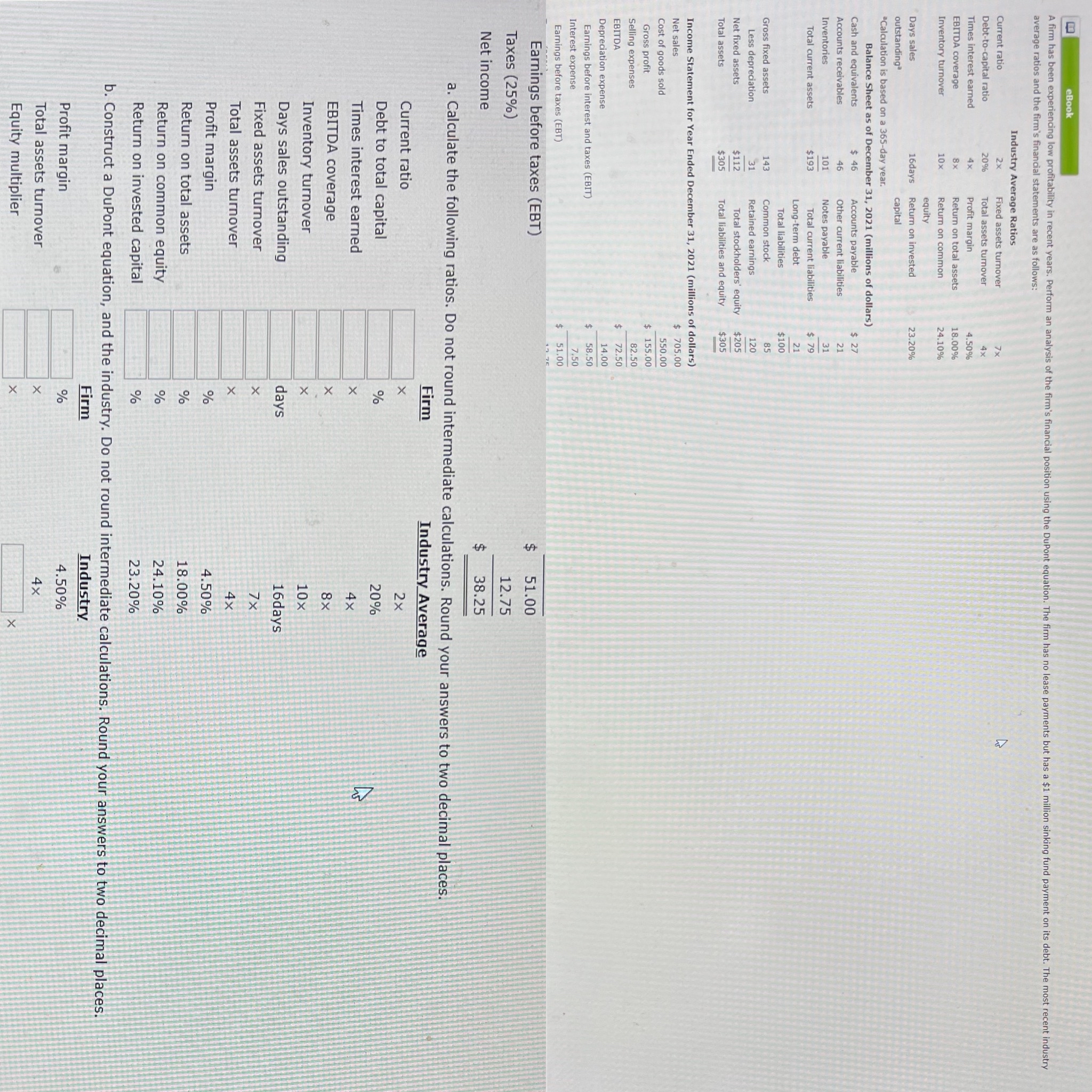Answered step by step
Verified Expert Solution
Question
1 Approved Answer
C ) Do the balance sheet accounts or the income statement figures seem to be primarily responsible for the low profits? I. Analysis of the
C Do the balance sheet accounts or the income statement figures seem to be primarily responsible for the low profits?
I. Analysis of the extended Du Pont equation and the set of ratios shows that most of the Asset Management ratios are below the averages. Either assets should be higher given the present level of sales, or the firm is carrying less assets than it needs to support its sales.
II The low ROE for the firm is due to the fact that the firm is utilizing more debt than the average firm in the industry and the low ROA is mainly a result of an excess investment in assets.
III. The low ROE for the firm is due to the fact that the firm is utilizing less debt than the average firm in the industry and the low ROA is mainly a result of an lower than average investment in assets.
IV Analysis of the extended Du Pont equation and the set of ratios shows that the turnover ratio of sales to assets is quite low; however, its profit margin compares favorably with the industry average. Either sales should be higher given thepresent level of assets, or the firm is carrying more assets than it needs to support its sales.
V Analysis of the extended Du Pont equation and the set of ratios shows that the turnover ratio of sales to assets is quite low; however, its profit margin compares favorably with the industry average. Either sales should be lower given the present level of assets, or the firm is carrying less assets than it needs to support its sales.
D Which specific accounts seem to be most out of line relative to other firms in the industry?
I. The accounts which seem to be most out of line include the following ratios: Inventory Turnover, Days Sales Outstanding, Total Agset Turnover, Return on Assets, and Return on Equity.
II The accounts which seem to be most out of line include the following ratios: Current, EBITDA Coverage, Inventory Turnover, Days Sales Outstanding, and Return on Equity.
III. The accounts which seem to be most out of line include the following ratios: Debt to Total Capital, Inventory Turnover, Total Asset Turnover, Return on Assets, and Profit Margin.
IV The accounts which seem to be most out of line include the following ratios: Times Interest Earned, Total Asset Turnover, Profit Margin, Return on Assets, and Return on Equity.
V The accounts which seem to be most out of line include the following ratios: Inventory Turnover, Days Sales Outstanding, Fixed Asset Turnover, Profit Margin, and Return on Equity.
E If the firm had a pronounced seasonal sales pattern or if it grew rapidly during the year, how might that affect the validity of your ratio analysis?
I. Seasonal sales patterns would most likely affect the liquidity ratios, with little effect on asset management ratios. Rapid growth would not substantially affect your analysis.
II If the firm had sharp seasonal sales patterns, or if it grew rapidly during the year, many ratios would most likely be distorted.
III. It is more important to adjust the debt ratio than the inventory turnover ratio to account for any seasonal fluctuations.
IV Seasonal sales patterns would most likely affect the profitability ratios, with little effect on asset management ratios. Rapid growth would not substantially affect your analysis.
V Rapid growth would most likely affect the coverage ratios, with little effect on asset management ratios. Seasonal sales patterns would not substantially affect your analysis.
F How might you correct for such potential problems?I. There is no need to correct for these potential problems since you are comparing the calculated ratios to the ratios of firms in the same industry group.
II It is possible to correct for such problems by insuring that all firms in the same industry group are using the same accounting techniques.
IlI. It is possible to correct for such problems by using average rather than endofperiod financial statement information.
IV It is possible to correct for such problems by comparing the calculated ratios to the ratios of firms in a different line of business.
V It is possible to correct for such problems by comparing the calculated ratios to the ratios of firms in the same industry group over an extended period.

Step by Step Solution
There are 3 Steps involved in it
Step: 1

Get Instant Access to Expert-Tailored Solutions
See step-by-step solutions with expert insights and AI powered tools for academic success
Step: 2

Step: 3

Ace Your Homework with AI
Get the answers you need in no time with our AI-driven, step-by-step assistance
Get Started


